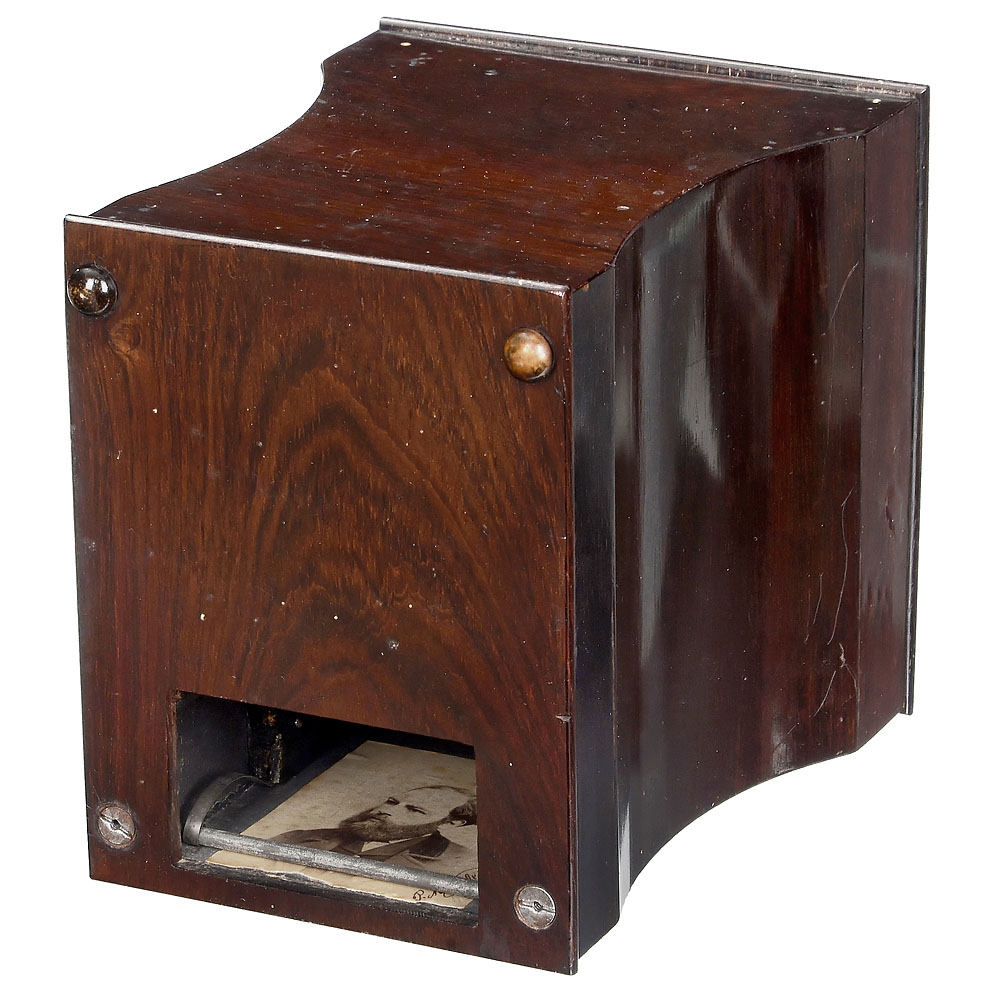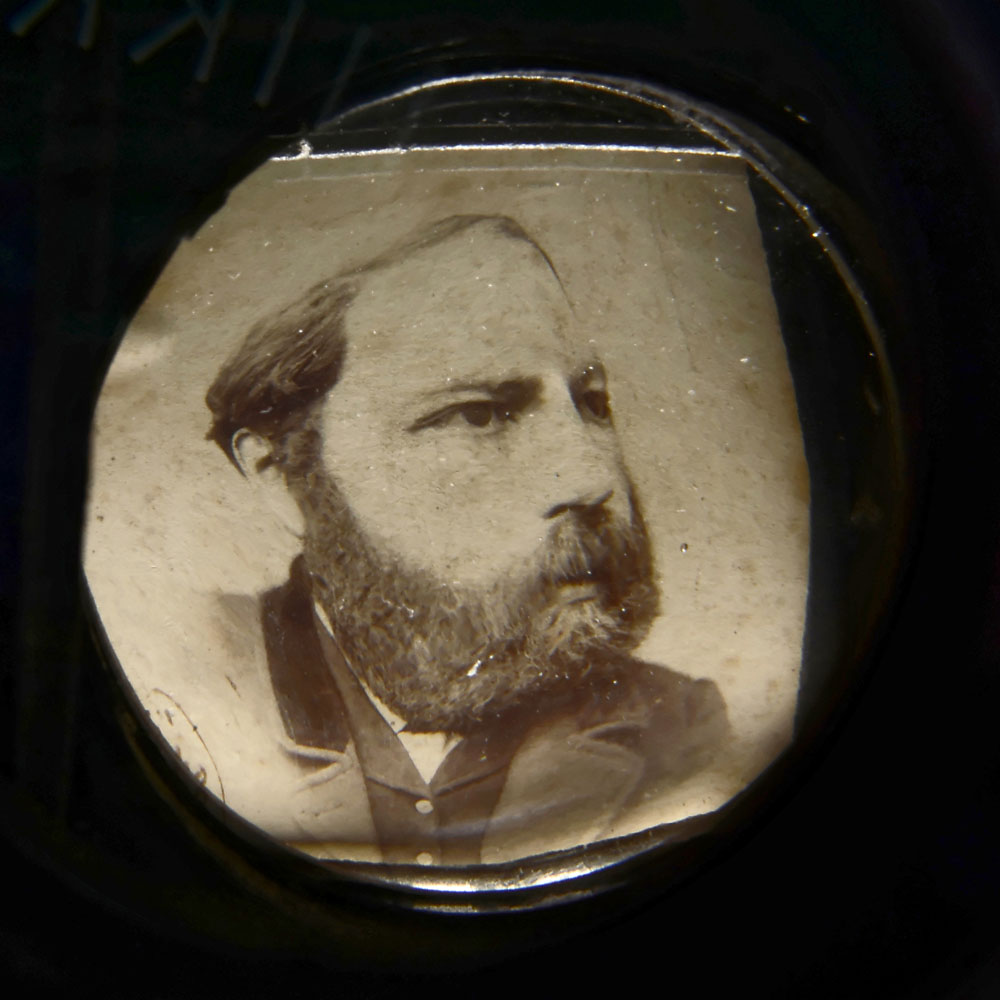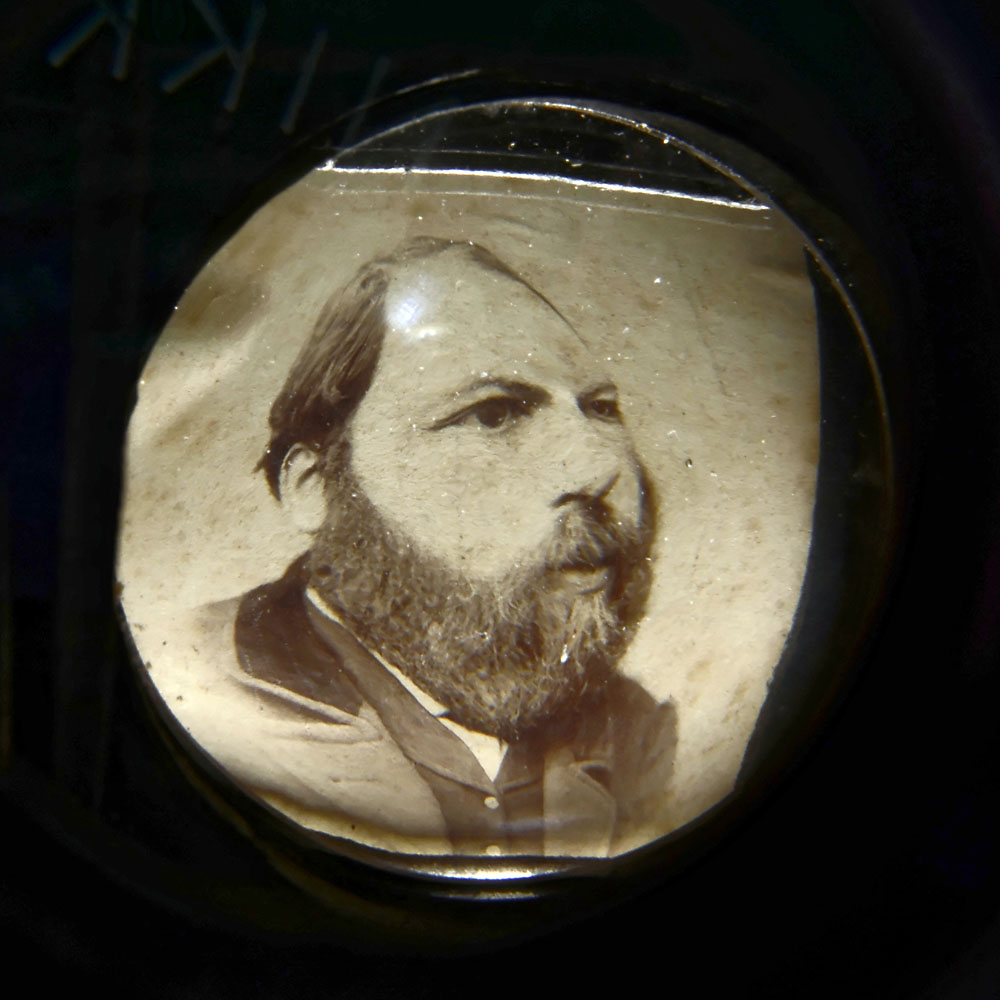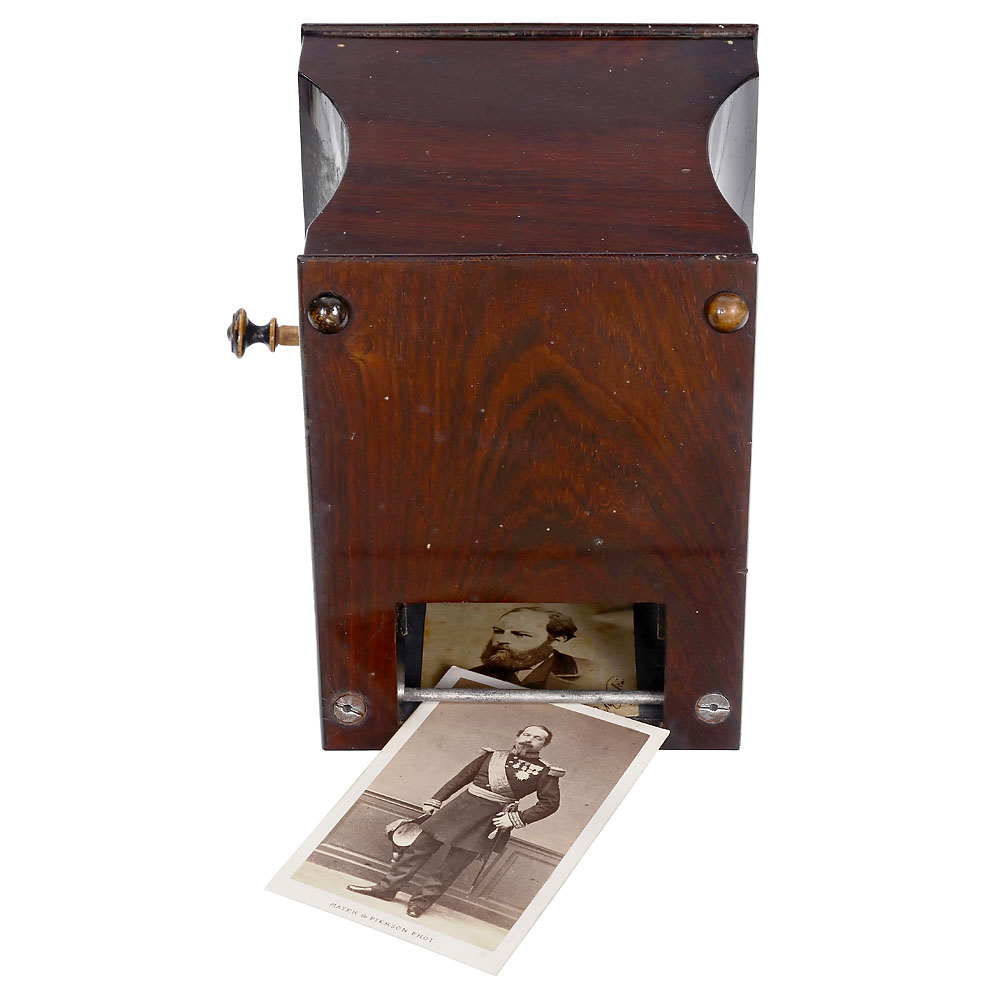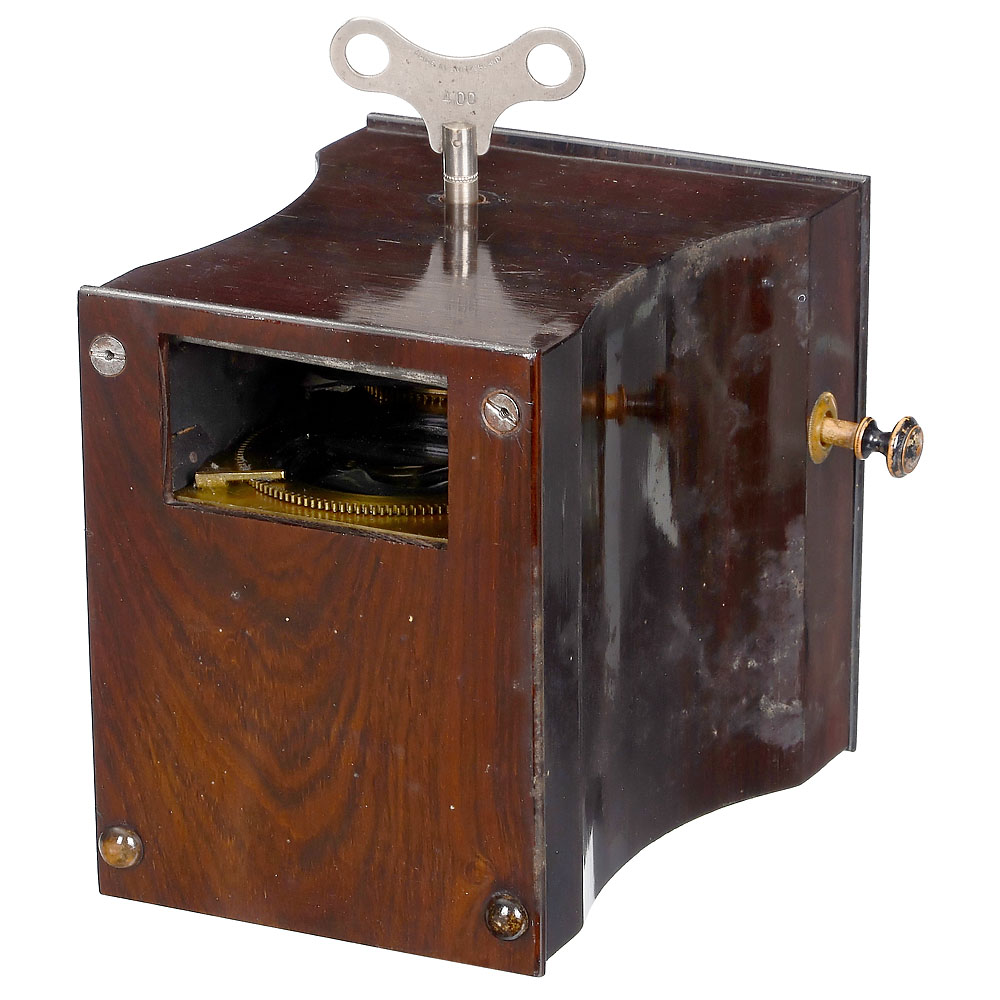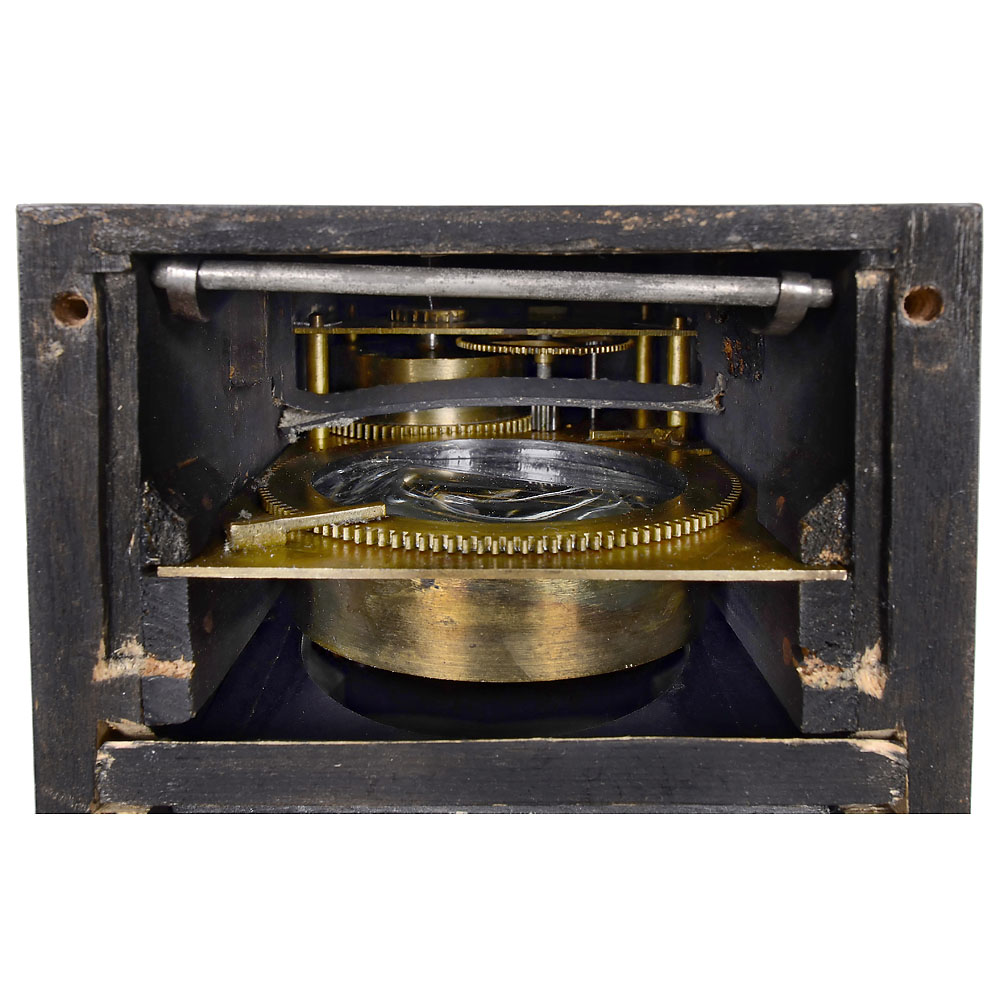Rare “Grimatiscope” Bincoular Viewer, c. 1870
Starting bid: € 6.000 | Estimate: € 8.000 – 12.000
Jules Duboscq, Paris. Patented French binocular viewer for creating distorted images from photographs, with spring-motor and aspherical lens, ht. 5 in., with signed fixed image, two screws on reverse without caps, key present, in working order.
Note: Named after the Greek word “grimatsa” (French “grimace” or English “grin”), this extremely rare viewer is a precursor of the so-called “Photographic Transformists” described by Louis Ducos du Hauron in 1889. A carte-de-visite (with a head as large as possible) is inserted into the back while a rotating aspherical lens transforms the photo into an amusing distortion. The effect can be heightened by moving the overlapping part of the photograph by hand. The viewer, one of only three examples we know of, was a reaction to the enormous success of the development of the carte-de-visite format by Disderi.
Literature: Aaron Scharf, “Art and Photography”, 1975, p. 233 ff.; Paul Wing, “Stereoscopes”, 1996.
Riesen-Rarität: Betrachter “Grimatiscope”, um 1870
Jules Duboscq, Paris. Patentierter 2-äugiger Zerrbildbetrachter, benannt nach dem griechischen Wort “grimatsa” (französisch “grimace” oder englisch “grin”). Ein normales, vorzugsweise besonders würdevolles Carte-de-Visite (C.d.V.) mit möglichst großem Kopf wird auf der Rückseite eingeschoben oder hineingehalten, und eine sich durch Federwerk drehende asphärische Linse “verwandelt” das Photo (nur den Bildanteil des C.d.V. von ca. 64 x64 mm) in ein amüsantes Zerrbild. Wackelt man noch selber am herausragenden Teil des Carte-de-Visite, verstärkt sich die Wirkung. Eine Reaktion auf den enormen Erfolg der C.d.V. Erfindung von Disderi. – Höhe: 13 cm, mit einem fest montiertem Bild mit einer Signatur. – Dieser äußerst seltene Betrachter ist einer der Vorläufer der sogenannten “Photographischen Transformationen”, wie sie Louis Ducos du Hauron um 1889 beschrieben hat. – Zwei Schrauben der Rückseite ohne Abdeckkappen, mit Aufzugsschlüssel, gut laufendes Federwerk. – Literatur: 1) Aaron Scharf, “Art and Photography”, 1975, S. 233 ff. – Und: 2) Paul Wing, “Stereoscopes”, 1996. – Dies ist weltweit das dritte bekannte Exemplar.


